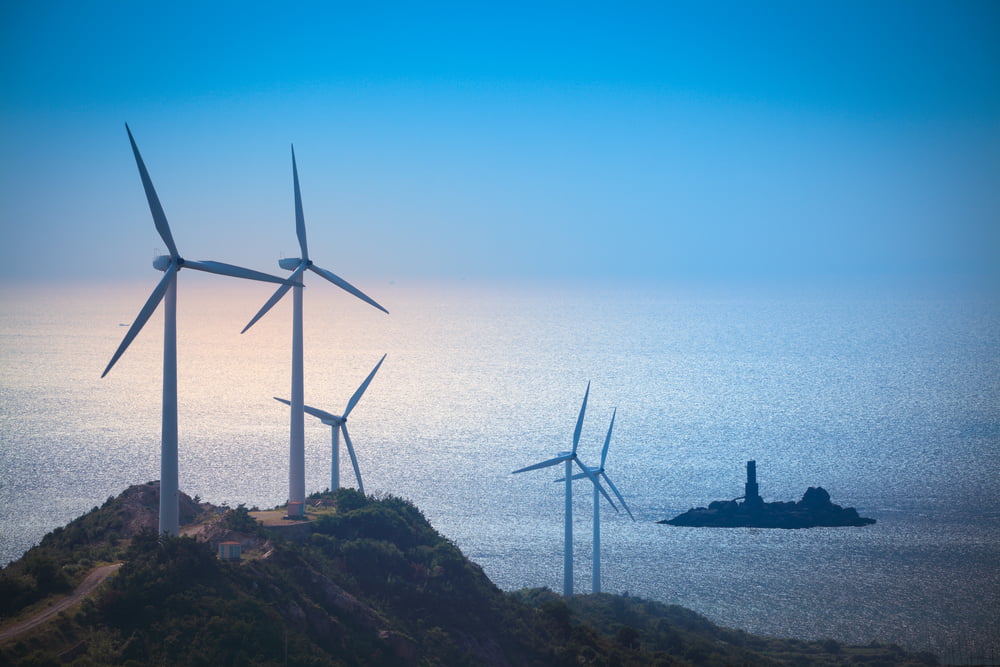Half of the UK’s renewable energy now comes from wind power, and by 2030, it will get a third of its electricity from offshore wind. But what do we do when there is no wind?
Despite being the windiest country in Europe, some of Scotland’s offshore wind turbines in the North Sea recently came to a standstill during so-called ‘wind droughts’.
So, can more be done to meet growing energy demands?
Researchers from the University of Plymouth found that installing tidal stream systems, in addition to solar and offshore wind farms, is around 25% more effective at balancing energy supply with demand than relying on solar and wind technologies alone.
Tidal energy — power generated from the rise and fall of ocean tides — has an abundance of positive potential. In fact, the global potential for tidal energy is judged to be around 1 terawatt, roughly parallel to the total installed capacity of all renewable energy sources put together.
Yet, tidal power has been largely absent from the discussion of alternative renewable energies. Why?
Tapping into the power of the tides
There are several ways to harness tidal energy. The most common is by building a barrage (a dam-like structure) across the mouth of a bay or estuary, creating a reservoir that fills during high tide. As water flows in and out, it travels through channels fitted with turbines that generate electricity.
An alternative approach is tidal stream generators, which operate in deeper water and create power using natural currents. Tidal generators rely on an underwater equivalent of a wind turbine, with rotors driven by water flow.
It has been debated that the construction of tidal barrages could affect local ecosystems and wildlife — and installing tidal stream generators may disrupt the seabed and threaten marine life. However, extensive environmental assessments must happen before any tidal energy project is given the green light, ensuring marine life is put at the forefront and protected.
Building tidal energy infrastructure is undoubtedly also an investment; it can cost several times more than solar or wind installations and has typically been underfunded by government schemes. But as technology advances and bigger economies get involved, these costs are expected to decrease — with the sector seeing increased backing.
A key reason for this support is that, unlike wind power, tidal energy is highly predictable and reliable; no other renewable energy technology can guarantee a particular power output at a certain hour on a date years into the future.
So, could a dual-edged approach be the answer to overcoming periods of high demand and low wind resources?
The future of tidal and wind energy
Because they naturally peak at different times, coupling tidal and wind power could go a long way toward creating a reliable renewable energy source. In fact, 12 megawatt wind capacity co-located with a 20 megawatt tidal array results in a 70% increase in energy yield compared to tidal turbines operating alone.
Integrating offshore wind farms and tidal turbines with the same foundation can also help to reduce installation costs. Plus, if the two power sources can use the same ocean real estate, fewer navigation or data buoys will be needed around the site — meaning less maintenance and further cost reductions.
https://www.traditionrolex.com/40
With research and experimentation by scientists, engineers and investors ramping up, the tidal energy industry will eventually reach a stage of development where pairing tidal and wind power is a practical reality.
Until then, the marine industry must encourage governments to join the conversation, exploring how to bring early-stage tidal energy concepts to fruition — instead of remaining just a straw in the wind.
Hydrosphere is the leading supplier of aids to navigation equipment for offshore renewable energy sites, such as wind farms and wave energy projects. Discover how our AtoN solutions can aid your next renewable energy project by contacting us at +44 (0)1420 520374 or sales@hydrosphere.co.uk.








